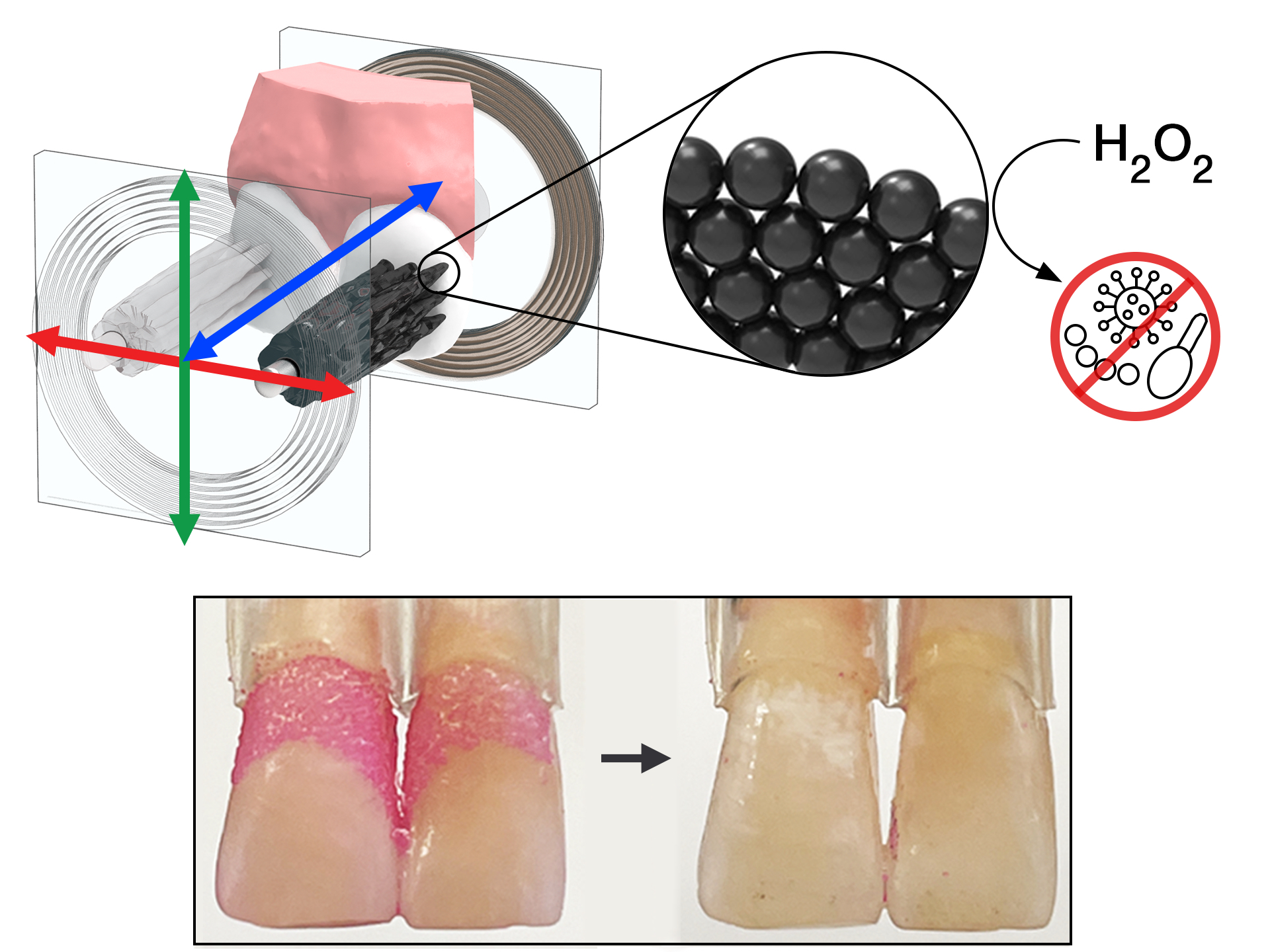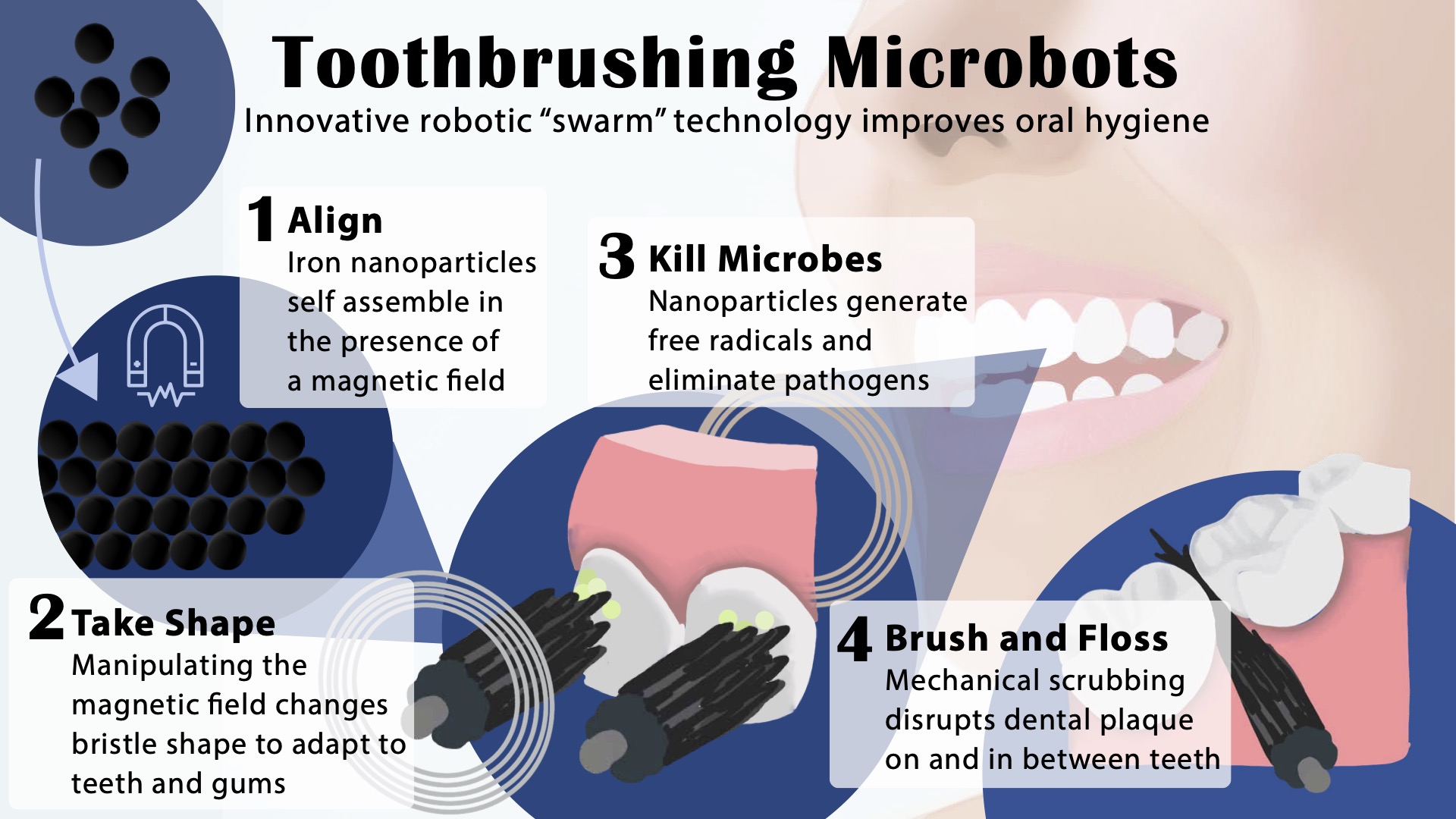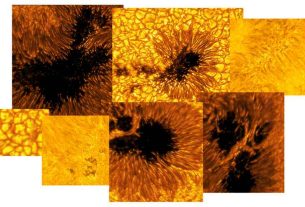Sat 23 July 2022:
University of Pennsylvania scientists have created shape-shifting microbots that can floss, rinse, and brush teeth.
The robotic system, which can form bristle-like structures along with form long string-like shapes, is magnetic and made from iron.
The prototype may be especially useful for elderly people who have trouble using their hands and find it challenging to brush their teeth by hand.

Arranged in bristle-like structures, a robotic microswarm of iron oxide nanoparticles effectively cleaned plaque from teeth. The nanoparticles have both magnetic and catalytic properties; catalyzed hydrogen peroxide produced free radicals that eliminated tooth decay-causing pathogens as well. (Image: Minjun Oh/Penn Dental Medicine)
Hyun (Michel) Koo, a professor at Penn’s School of Dental Medicine and a study co-author told PennToday “Routine oral care is cumbersome and can pose challenges for many people, especially those who have a hard time cleaning their teeth.”
Experiments using this system on mock and real human teeth showed that the robotic assemblies can conform to a variety of shapes to nearly eliminate the sticky biofilms that lead to cavities and gum disease. The Penn team shared their findings establishing a proof-of-concept for the robotic system in the journal ACS Nano.
“Routine oral care is cumbersome and can pose challenges for many people, especially those who have hard time cleaning their teeth” says Hyun (Michel) Koo, a professor in the Department of Orthodontics and divisions of Community Oral Health and Pediatric Dentistry in Penn’s School of Dental Medicine and co-corresponding author on the study. “You have to brush your teeth, then floss your teeth, then rinse your mouth; it’s a manual, multistep process. The big innovation here is that the robotics system can do all three in a single, hands-free, automated way.”
Comparing the microbots to “a robotic arm that might reach out and clean a surface” Edward Steager, a study co-author from Penn’s School of Engineering and Applied Science believes that tiny machines can be programmed.

An infographic explains the magnetic and catalytic properties of the iron oxide nanoparticles and their assembly into bristle and floss-like forms. (Image: Melissa Pappas/Penn Engineering)
“Nanoparticles can be shaped and controlled with magnetic fields in surprising ways,” Steager said.
“The big innovation here is that the robotics system can do all three in a single, hands-free, automated way,” he added.
From contrast agents that get injected into MRI patients to delivery systems for some drugs, the US Food and Drug Administration has approved the use of iron oxide nanoparticles for use in other biotech products.
SOURCE: INDEPENDENT PRESS AND NEWS AGENCIES
___________________________________________________________________________________________________________________________________________
FOLLOW INDEPENDENT PRESS:
TWITTER (CLICK HERE)
https://twitter.com/IpIndependent
FACEBOOK (CLICK HERE)
https://web.facebook.com/ipindependent
Think your friends would be interested? Share this story!





